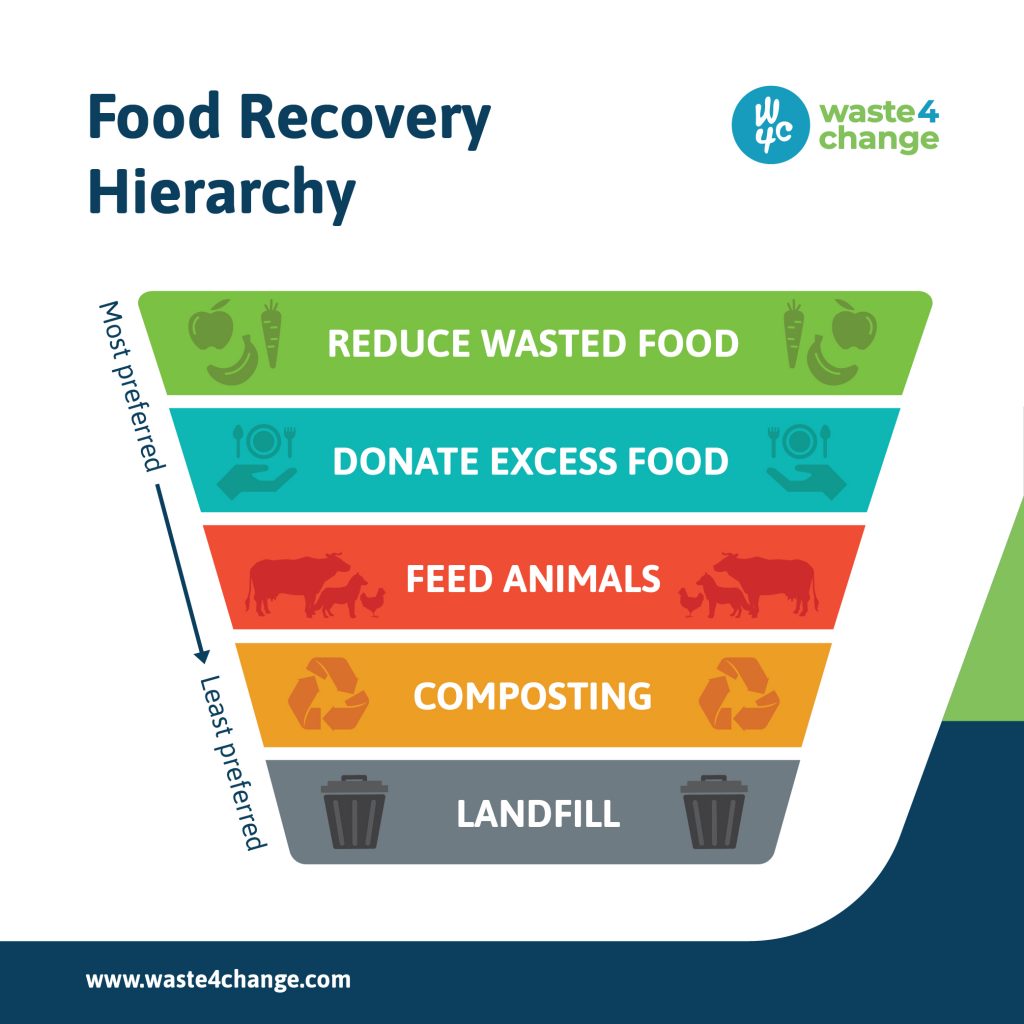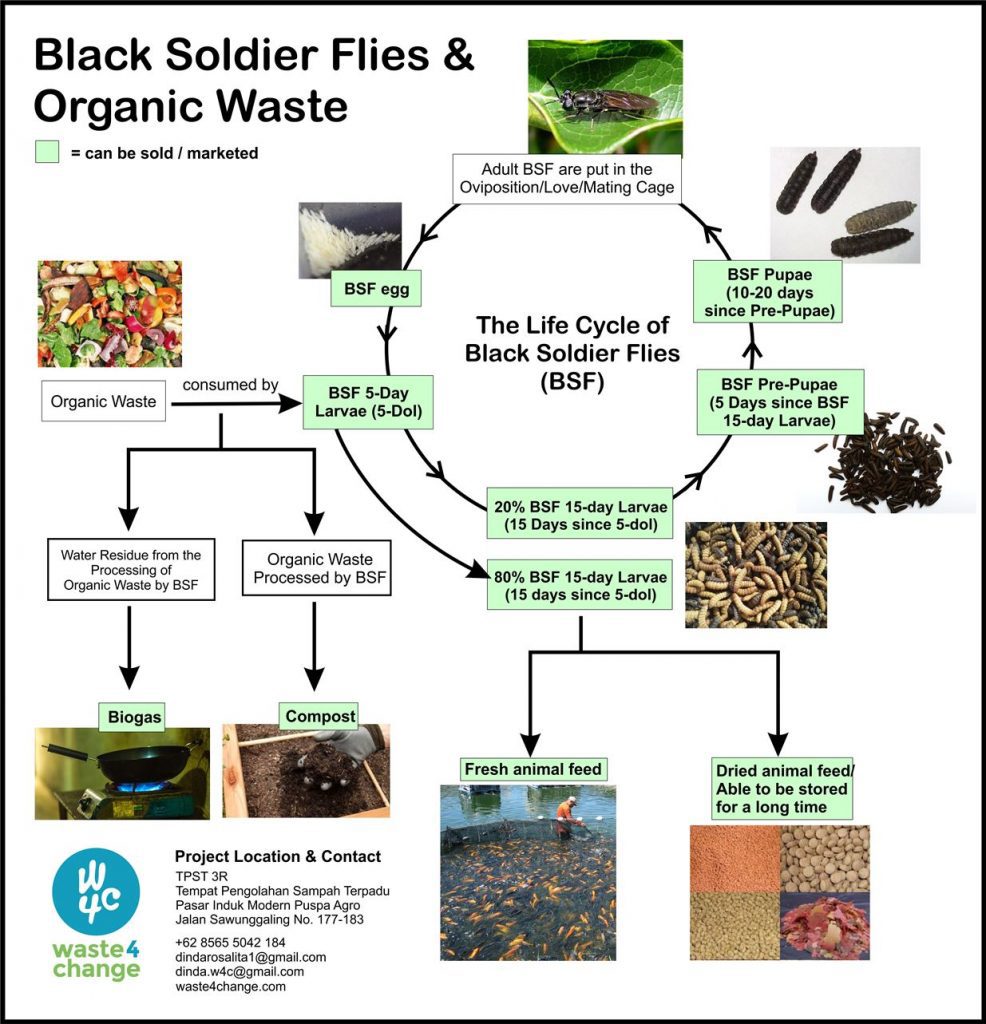Fun Waste-Segregation Learning with Waste4Change!
Waste Segregation Begins at Home
Hello everyone,
The following are educational material and activity sheets for the introduction of responsible waste-segregation techniques.
Educational materials are divided into all ages (in the form of posters and presentations) and for children at least 3 to 6 years of age (activity sheets to practice coloring, motor, cognitive, sensory, arts, and social skills).
Educational material can be downloaded and printed (sizes between A2, A3, and A4), but we also encourage all of you to reduce paper usage. It is recommended to use paper that is no longer used, or if it will be more effectively printed, make sure it is used optimally.
Thank you for your participation in spreading #BijakKelolaSampah (responsible and wise waste management), hopefully, we will learn together to achieve #100PersenTerpilah (fully segregated waste).
Waste-Segregation Educational Posters and Materials (for all-ages)
| No | Description | Download Link | Further Explanation Link |
| 1 | Explanation of BSF (Black Soldier Flies) Life cycle | Inggris | Indonesia | Inggris | Indonesia |
| 2 | List of Recyclable and Residual Waste | Inggris | Indonesia | Inggris | Indonesia |
| 3 | Responsible Waste Management Hierarchy | Inggris | Belum ada |
| 4 | Food Recovery Hierarchy | Inggris | Belum ada |
| 5 | How to Manage Your Medical Mask Waste | Inggris | Indonesia | Inggris | Indonesia |
Waste-Segregation Education and Activity Sheets (for children at least 3 and 6 years old)
Let’s reduce paper waste. Use paper that is no longer used, or we recommend that you only print worksheets that require motor skills.
| No | Description | Activity | Minimum Age | Download Link |
| 1 | Get to Know About Garbage Truck | Motor skills (coloring) | 3 years old | Black and White |
| 2 | So Many Waste Bins! | Motor skills (coloring, circling) | 3 years old | Black and White |
| 3 | The Two Types of Waste | Motor skills (coloring, connecting dots) | 6 years old | Black and White |
| 4 | The Person Who Picks Up My Waste | Motor skills (coloring, circling) | 3 years old | Black and White |
| 5 | Making “Degradable Waste” Sign | Motor skills (coloring, cutting, sticking) | 6 years old | Black and White |
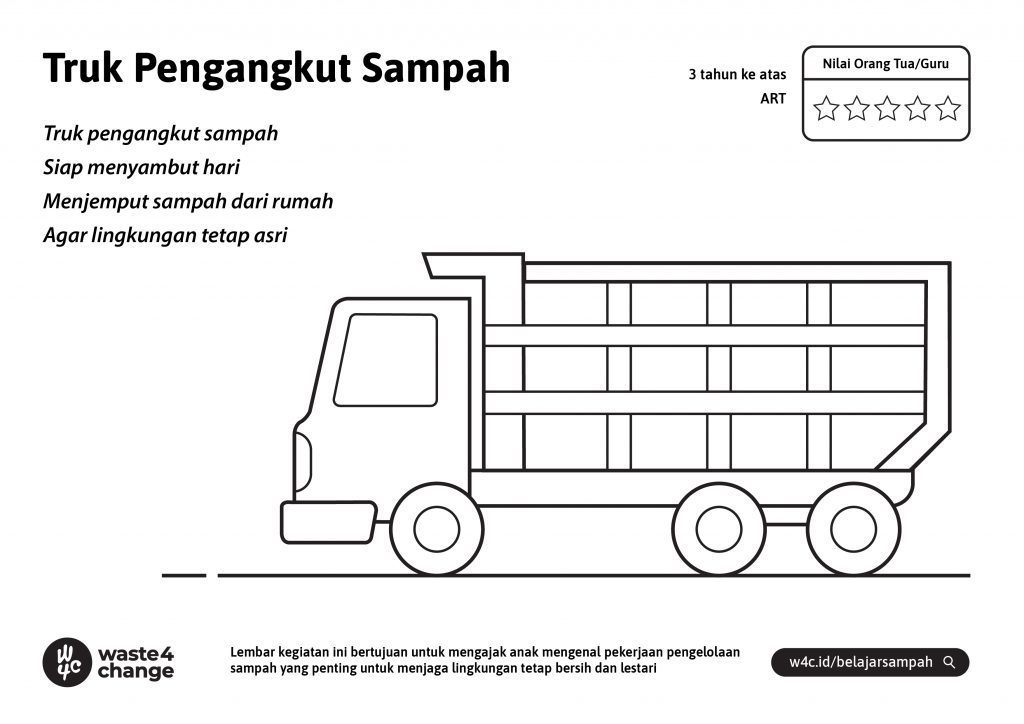


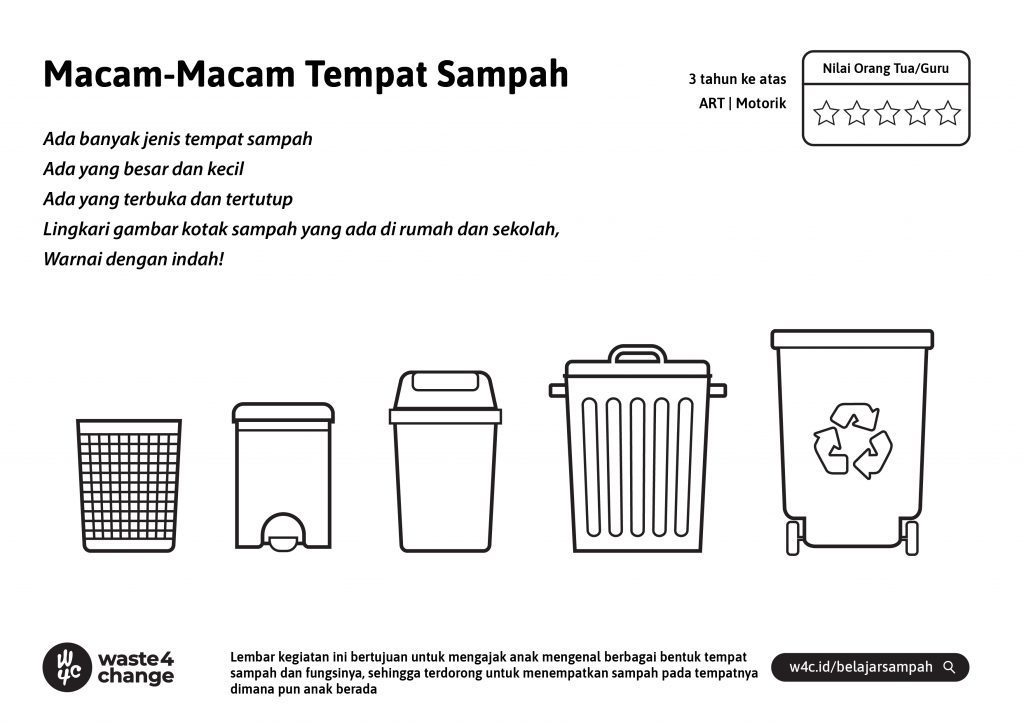








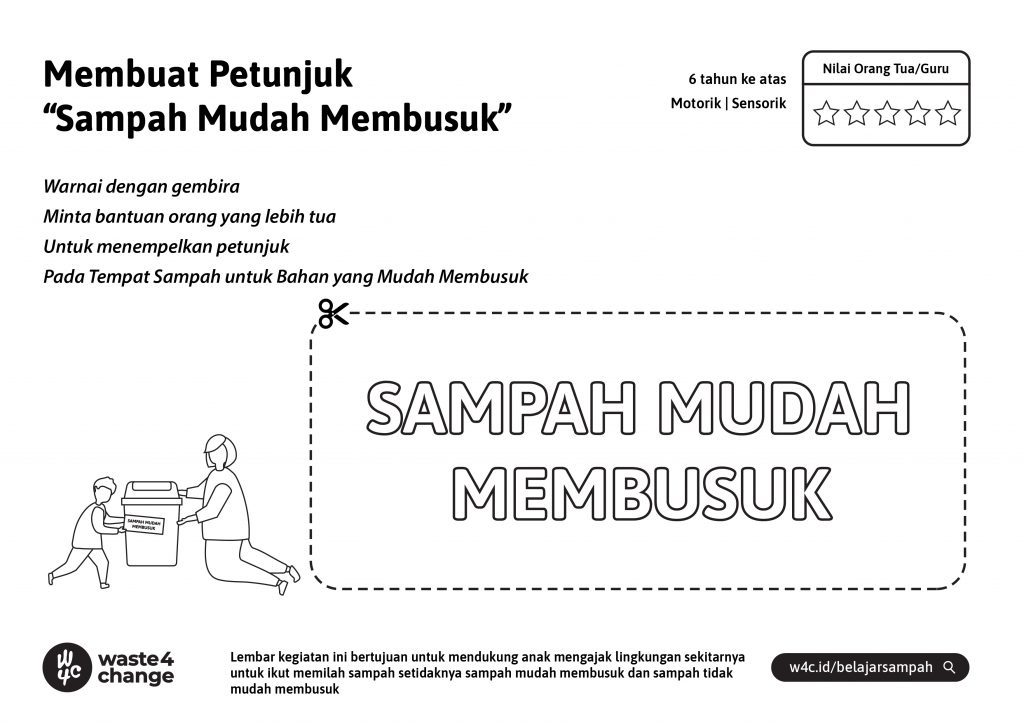


It’s Time to Educate Our Next Generation about Waste Segregation
Dear Parents and Educators,
Given the climatic conditions of our earth today, it is time for us to educate the next generation to be more concerned about environmental preservation. One way to preserve the environment is to familiarize ourselves and our future generations to sort waste.
By sorting out for at least Degradable Waste (organic) and Non-Degradable Waste (inorganic) Waste, we have helped reduce the amount of residual waste that ends up in landfill, and also helps reduce the production of methane gas (CH4) which is a greenhouse gas that can accelerate ozone layer depletion.
Many of our Non-Degradable Waste (inorganic) aren’t processed due to contamination of organic materials and lack of waste segregation. There are also many foods that are still useful either as compost or to improve nutrition for many people who need it but are wasted in vain due to the lack of education and understanding of organic waste management.
Through this Waste Segregation worksheet from Waste4Change, we hope to provide advice and inspiration for education in waste segregation that is presented according to children’s growth and development stage. This waste-segregation education worksheet covers children’s training in terms of motor, sensory, emotional, and also letter recognition and numbers.



Material Introduction to the topic of Waste Management for Different Ages
The following is an introduction to materials related to waste management that we recommend for children of different age stages:
3 to 5 years old:
- The importance of maintaining personal hygiene
- Training responsibility in putting waste in its place
- Learning about waste management officers job
- Eat food that is clean, healthy, & not stale
- Finish your food to reduce waste
6 to 8 years old:
- Putting Waste According to its Type: Degradable Waste & Non-Degradable Waste
- Introduction to Degradable Waste Management
- Introduction to Non-Degradable Waste Management
- How to Reduce Degradable Waste
- How to Reduce Non-Degradable Waste
- Playing a role as well as inviting others and the environment to segregate waste
The Role of Parents and Educators:
- Supporting children to take responsibility for their garbage, at least by sorting their own waste
- Introducing the concept of ‘rotting’ and ‘degradation’ to children and using the words “easy to degrade” and “not easy to degrade” before using the words “organic” and “inorganic”
- Supporting children to reduce the production of Degradable Waste by knowing their daily nutritional intake needs and responsible for finishing the food on their plates. If not finished, divide/separate from the beginning to be given to the needy or stored to be eaten later.
- Supporting children to make sure the Non-Degradable Waste is in a clean and dry condition before sorting it and handing it over to the waste management officers.
- Supporting children to make efforts to repair, donate, compost, make crafts, before handing over materials/goods to be recycled by waste management officers
- Supporting children to respect and ensure the health and safety of waste management officers
- Facilitate children’s learning needs regarding waste segregation by at least preparing trash bins for at least 2 categories: Degradable Waste and Non-Degradable Waste
- As for the results of better education on managing waste, we recommend dividing waste in more detail as followings: Degradable Waste for Compost Purpose, Degradable Waste for Non-Compost Purpose, Non-Degradable Paper Waste, Non-Degradable Non-Paper Waste, Hazardous Waste, Medical Waste, and Residual Waste
Read the Indonesian version here.

